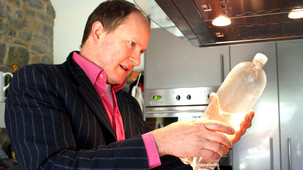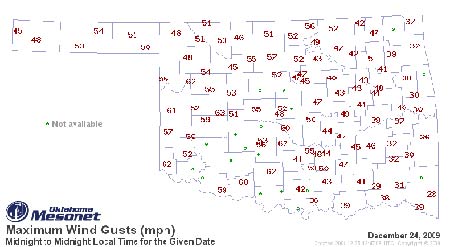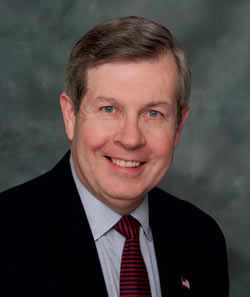This evening at 8-10 p.m. is the First Annual Reception for
CoRioLiS: LGBTQs & Friends in the American Meteorological Society.
Enjoy refreshments and hear from guest speaker Guy Walton, TWC forecaster, on “Acceptance and Innovation at The Weather Channel.” (By the way, after you hear Walton’s talk at the reception, consider catching his temperature extremes study Tuesday at 11 a.m.).
The reception, in the Juniper Room M2-North Tower of the Omni Hotel, in sponsored by the AMS Board on Women & Minorities, the UCAR Community Building Program, and the National Organization of Gay and Lesbian Scientists and Technical Professionals (NOGLSTP). For more information, contact Zhenya Gallon at ext. 8607, [email protected],
or see CoRioliS on Facebook.
 Jeff
Jeff
How to Spot a Cloud Enthusiast
Sunday night is movie night at this year’s Atlanta meeting. While weather-related flicks will be playing near continuously at the DVD theater this week, the 7 p.m. showing Sunday is U.S. premiere of the BBC4 program,  “Cloudspotting,” a paean to the beauties, mysteries, and wonders of the sky. Narrator Gavin Pretor-Pinney, founder of the Cloud Appreciation Society, draws on art, science, mythology, and a deep love of the sky that will undoubtedly resonate with AMS attendees and their families. We suspect there will be plenty of true cloudspotters in the audience.
“Cloudspotting,” a paean to the beauties, mysteries, and wonders of the sky. Narrator Gavin Pretor-Pinney, founder of the Cloud Appreciation Society, draws on art, science, mythology, and a deep love of the sky that will undoubtedly resonate with AMS attendees and their families. We suspect there will be plenty of true cloudspotters in the audience.
For a brief sample of the profound identification with the skies that Pretor-Pinney brings to this visually stunning 90-minute show, check out this little audio clip of him speaking at a recent author’s talk at Google, promoting his book, The Cloudspotter’s Guide.
Or follow up after the movie, when you have time, for the whole lecture:
This Christmas, the Gift of Salience
Midwesterners take pride in their ability to handle blizzards and ice that make walking and driving miserable and harrowing, not to mention downright dangerous. Even so, yesterday, people generally stayed off the roads, canceling long awaited Christmas Eve events. Those who ventured out often ran into trouble, according to news reports:
Betsy Graupe lost count of the number of vehicles she saw in the ditch while driving from Chicago to see her family in Minneapolis, a journey of some 350 miles (570 kilometers).
“It was very, very bad out,” said Graupe, who ended up pulling off the highway and spending Wednesday night in a hotel.
“It was poor visibility, and icy and the road was rutted… it was quite an adventure.”
Were the people who spun out beside the road lacking experience with winter? Were they unaware of the situation? Were they making a bad calculation of the risks, or just unlucky?

We’ll probably never know unless some enterprising social scientist follows up. Scientists did follow up on one recent storm—the miserable icing in January 2007 that turned roads into skating rinks in the nation’s midsection during the AMS Annual Meeting in San Antonio.
If you remember, hundreds of attendees never made it to that meeting due to airport and road closures. Kim Klockow and Randy Peppler of the University of Oklahoma polled their peers about travel to that meeting. Their findings, presented at the 2008 AMS Annual Meeting (and published this summer in the NCAR newsletter, Weather and Society Watch), show that very few of their cohorts chose to stay home. Some avoided hopeless airline delays by choosing to drive despite road conditions. Some were anxious about the trip from Norman to San Antonio, some were not. Many left early, others left late, but they found ways to deal with the weather, minimizing but not eliminating travel risks. Access to information gave them enough confidence to brave the situation and make relatively bold choices.
Of course, these were weather savvy travelers—“weather salient,” in the psychological lexicon (see this BAMS paper by Alan E. Stewart for more on this). One wonders how seasoned natives navigated similar choices yesterday and today.
In Oklahoma, at least, the governor didn’t wait long to see what people would do. He closed interstates and state highways:
“I am urging all Oklahomans to take winter storm precautions and stay off the roads unless travel is absolutely necessary,” Gov. Brad Henry said earlier in the day after declaring a state of emergency. “This is a very serious winter storm, and we want Oklahomans to stay safe.”
Perhaps the governor didn’t read Klockow and Peppler’s study. Or maybe he did, and realized that the bar for weather salience this Christmas was a little too high.
Author, Sailor, Scientist, AMS President-to-Be
“I’ve been trying to keep this to the scientific side tonight, Amy,” Mike said. “But you can tell this has been more of a spiritual experience, for me.”–from Seraphim Sky, by Jonathan Malay (iUniverse, 2003)
It’s not every day that we get to quote from a novel, but then, with the

results from this fall’s AMS elections announced today, we’re understandably going to stray from the scientific side and get into the spirit of the moment.
Seraphim Sky is not just any book, but a novel by our newly announced AMS President-Elect Jon Malay, a one-time research oceanographer, astronaut candidate, and meteorological officer for the Navy, more recently an entrepreneur, government manager, and long-time proponent and practitioner of space-based observational programs, now at Lockheed-Martin.
Undoubtedly, we’ll have more in this blog later about his ideas for 2011, when he takes over leadership of our Society from incoming president, Margaret LeMone. Already in BAMS he’s emphasized the commitment the United States must maintain in geophysical observations and services, as well as the breadth of AMS and its impact:
We in the AMS have a collective responsibility to do whatever we can to ensure that policy decisions are based on sound science and reasoned judgment. The economic consequences of actions taken by the U.S. government (and, for that matter, governments around the world) will have enormous consequences—either for good or for very, very, bad. What stands between these two extremes is the effectiveness of the educated and technically correct voice of the AMS community.
Congratulations to Jon and to the four newly-elected AMS Councilors, Ken Carey, John Schaake, Rick Spinrad, and Ahsha Tribble. Now back to the (mostly) scientific side.
Exposing Air Travel Radiation Concerns
The Space Weather Symposium at the AMS Annual Meeting once again will discuss the radiation exposure that airplane passengers get from outer space. This year the presentations in this area of space weather cover future suborbital flights as well (Tuesday, 1:30 p.m., B315).
A typical flight exposes airline passengers to minimal levels of extraterrestrial radiation; such occasional exposures are not considered harmful. The radiation concern is usually reserved for high-flying pilots who spend a lot of time in the air, especially on long polar routes, or for flights during a solar storm.
But one source of gamma rays and typical x-rays might indeed be quite problematic, though very rare, for ordinary air travelers. The radiation is not from outer space, but instead from Earth.
A research group led by Joe Dwyer, professor of physics and space sciences at Florida Institute of Technology, shows that terrestrial gamma-ray flashes (TGFs) produced by thunderclouds could expose nearby airplanes to a radiation dose of 10 rem. That’s about 400 chest X-rays, three CAT scans, or 7,500 hours of normal flight time, what the researchers describe as
On Mars, the Dust Devil's in the Details
Discoveries about the atmospheres of other planets have been closely linked to insights about our own. When a young Carl Sagan confirmed the effect of high CO2 concentrations—a runaway greenhouse effect—on Venus in 1960, for instance, he helped intensify interest in potential anthropogenic warming on Earth.
Conversely, climate models, and now mesoscale weather models such as the WRF, developed for Earthly forecasting, are applied to modeling conditions elsewhere. At the AMS’s first Symposium on Planetary Atmospheres in Atlanta, Scot Rafkin of the Southwest Research Institute will present, “Application of Mesoscale Atmospheric Models to Mars Missions” (Thursday, 11 a.m., B211). He’ll discuss how terrestrial weather models helped engineers anticipate landing conditions on the Red Planet as well as
When Wars Are Hot, Crops Are Not
As if it weren’t enough to keep track of arms trafficking, political mischief, and ethnic tensions around the world, now international aid agencies and national security watchdogs are told they have to watch temperatures, too. An article last week in the Proceedings of the National Academy of Sciences links warm years in West Africa with major civil conflicts (defined to include battle deaths of at least 1,000).
The authors, led by Marshall Burke, an economist at the University of California, Berkeley, show that temperature has a stronger relationship to internal strife than typical indicators like per capita income or type of political regime. They predict more conflict in the region as the world warms.
Other studies, noting the centrality of rain-fed agriculture in West Africa, have identified precipitation as a regional security indicator. However, the new study shows that temperature may be an even better
Magic Numbers
The tangibility of numbers makes them an ideal tool for marketing. Telling drivers to slow down isn’t nearly as vivid as telling them that “55 saves lives,” (though we later learned that 65 m.p.h. apparently saves lives just as well). Football fans have probably seen ads for the NFL’s “Play 60” campaign that encourages children to get a daily hour of exercise, and there is a similar program for K-5 teachers and their students called “Take 10.” Numerous other examples abound.
Not surprisingly, climate change activists have discovered the allure of numbers, too. A recent worldwide demonstration highlighted
Walking through Problems of Urban Air Quality
Doctors tell us to get more exercise—walking is as good for the body as for the environment. But is it healthy to take a walk in neighborhoods where walking is actually practical? If Vancouver, British Columbia, is representative of most urban areas, then the answer is “no.”
A recent study in Environmental Health Perspectives found that areas that rate highly for both walkability and air quality house only about 2% of the city’s population (they tend to be high-income regions a few miles from downtown).
The nitric oxide and the resulting ozone from auto emissions tend to concentrate in different parts of the city: nitric acid is more pervasive downtown, because ozone takes longer to form and has often drifted from its city sources before reaching its greatest concentrations in the suburbs.
The authors suggest that living in high-rises have an unintended health benefit: they are usually in a walkable environment and also allow most residents to spend much of their time farther away from street-level emissions.
These roadway air quality problems can be quite serious. A new study of the Los Angeles area connects asthma in children with proximity to heavy-traffic areas, with 9% of all childhood asthma cases in Long Beach and 6% in Riverside attributable to living within 75 meters of a major road.
“The impact of roadway proximity on the overall burden of asthma-related illness is remarkable,” said principal investigator Rob McConnell of the University of Southern California. “Air pollution is a more important contributor to the burden of childhood asthma than is generally recognized, especially to more severe episodes requiring visits to a clinic or emergency room.”
The study in the American Journal of Public Health also highlighted the impact of shipping in the region—the Los Angeles-Long Beach port is the largest in the United States—by estimating that 21% of asthma-related bronchitis episodes in Long Beach (about 1,400 cases total) and 8% in Riverside (3,400 cases) were caused by nitrogen dioxide emitted by ships.
If the air is the problem, then meteorology may offer some of the solutions. In a poster to be presented Monday (2:30 pm; Environment and Health Symposium) at the AMS Annual Meeting, David Quesada will report on correlations between weather—including humidity, rain, and winds—and asthma in Miami, Florida, where residents suffer above-average asthma incidence.
With pollen and particulate data in hand, the project may identify ways to help residents live well in an urban environment—without necessarily building more high-rises.
Making a MoPED with Big Rigs
Speaking of the future of weather information along transportation corridors, one of the presenters in the Weather and Transportation sessions Monday (1:30 p.m.) is Brian Bell of Global Science & Technology, an exhibitor at the upcoming Annual Meeting. His topic is a project that will show NOAA how well the commercial trucking fleet can serve as an automated system to gather and report weather information on the road, just as airliners do in the air.
Last year at the AMS meeting GS&T demonstrated a novel mobile weather station with an inflatable satellite dish for easy deployment. But this fall the West Virginia company won the 9-month contract from NOAA to build the Mobile Platform Environmental Data observation network (MoPED). To learn more about the project before the Annual Meeting, see this article from the Times West Virginian.